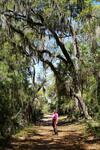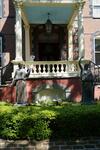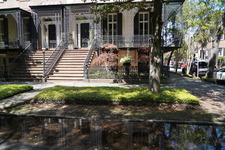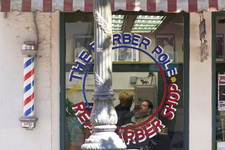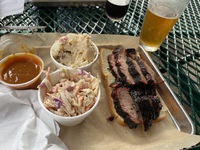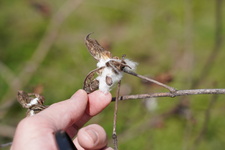 |
| Angelika/Mike Schilli |
|
Angelika For a long time, I have wanted to travel to the southern states of the USA, specifically Charleston in South Carolina. I'm interested not only in history but also in cities that can tell stories, places with charm and old, architecturally interesting buildings. You don't find much of that on the West Coast of the USA.
The East Coast offers much more in this regard. While preparing for the trip, it quickly became clear that we should visit not only Charleston but also Savannah. Savannah is only 100 miles south of Charleston, but it's already in a different state, Georgia.
Opinions differ on whether Charleston or Savannah is more beautiful. Both offer a lot and have similar attractions; ultimately, it's a matter of taste, but both are worth a visit. Charleston is slightly older and larger than Savannah. It was founded in 1670 and now has a little over 150,000 residents, while Savannah was established in 1733 and currently has 147,780 residents.
Due to my job at the German school, I now have not just one week of Easter break, but two, as is customary in the German school system. This was perfect for our vacation in the southern states. We flew into Charleston, South Carolina, via Charlotte, North Carolina, stayed there for a few days, then continued to Savannah, and finally made our way to the coast to Jekyll Island.
Charleston felt more touristy to us than Savannah. The horse-drawn carriages that took tourists through the historic part of the city were immediately noticeable. The old town boasts beautifully restored buildings and some cobblestone streets. Founded in 1670, Charleston is one of the older American cities. The city's history is reflected in its various architectural styles. It seems like there's a church on every corner, sometimes even two. The proximity to the Atlantic Ocean results in high humidity and a mild (but hot in summer) climate.
Savannah rivals Charleston architecturally. What is particularly charming in Savannah are the numerous squares and parks, reminiscent of Paris, which make the city appear especially green. While Charleston is known for its churches, Savannah is known for its old historic cemeteries, which are lovely to wander through. I particularly liked Bonaventure Cemetery, located just outside the city center. It spans 40 hectares, and many of the graves are over 100 years old.
I met a nice man there who was eager to tell me about the old historic graves. He had an enormous amount of knowledge. When I inquired further, he told me that he was interested in history and cemeteries and often walked his dog through the cemetery to share his knowledge with tourists. As you can see, history is always present in Charleston and Savannah.
Culinary experiences in the southern states tend to be more rustic. Smoked barbecue beef with coleslaw is legendary, tender, and smoky. Michael was also taken with "Shrimp and Grits," shrimp served on a bed of cornmeal porridge. Of course, we enjoyed fresh oysters and fish, and even tried some modern luxury cuisine.
The southern states of the USA are also known for the thriving slave trade conducted there until 1865 and the related American Civil War. The legacy of slavery remains a sensitive topic, with much debate over how it should be addressed, especially in the southern states. Both Charleston and Savannah have several museums and sites that focus on and attempt to address the history of the slave trade. Near Charleston, we visited an old cotton plantation, the McLeod Plantation. There, visitors are presented with the history of the plantation from the perspective of the slaves. Very interesting!




